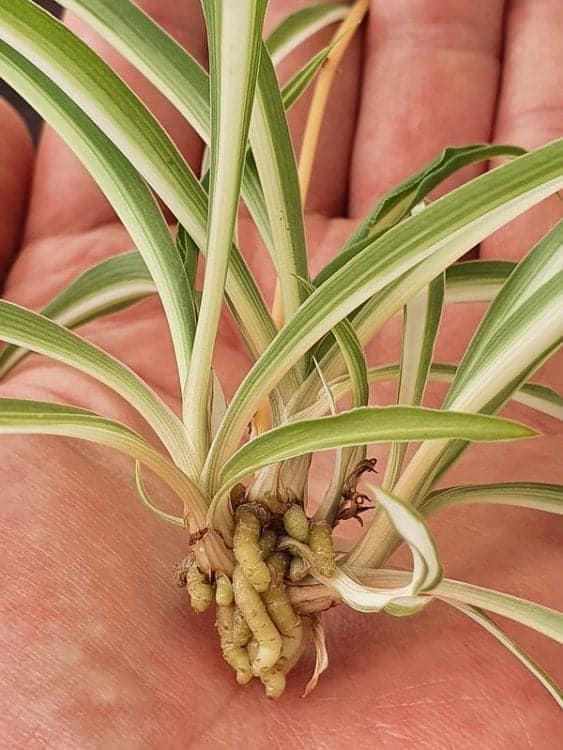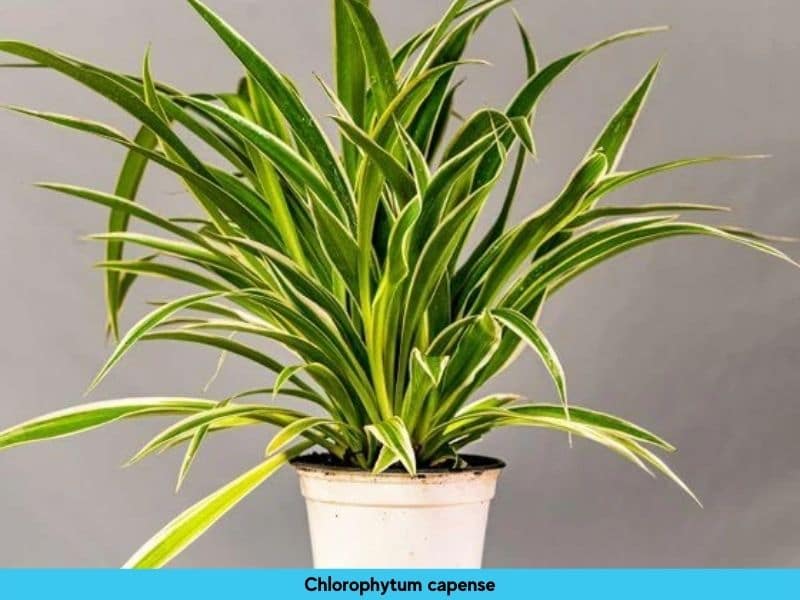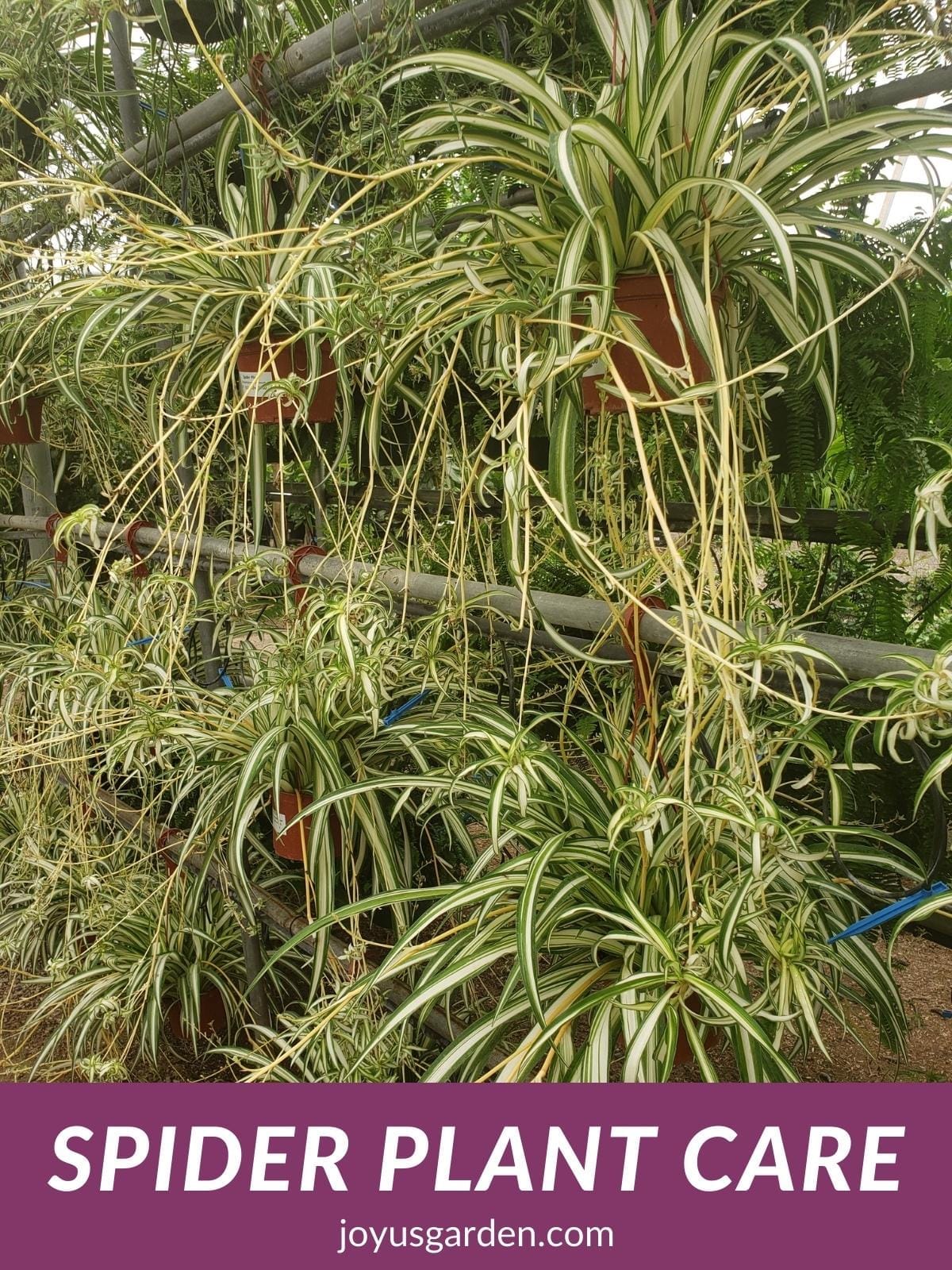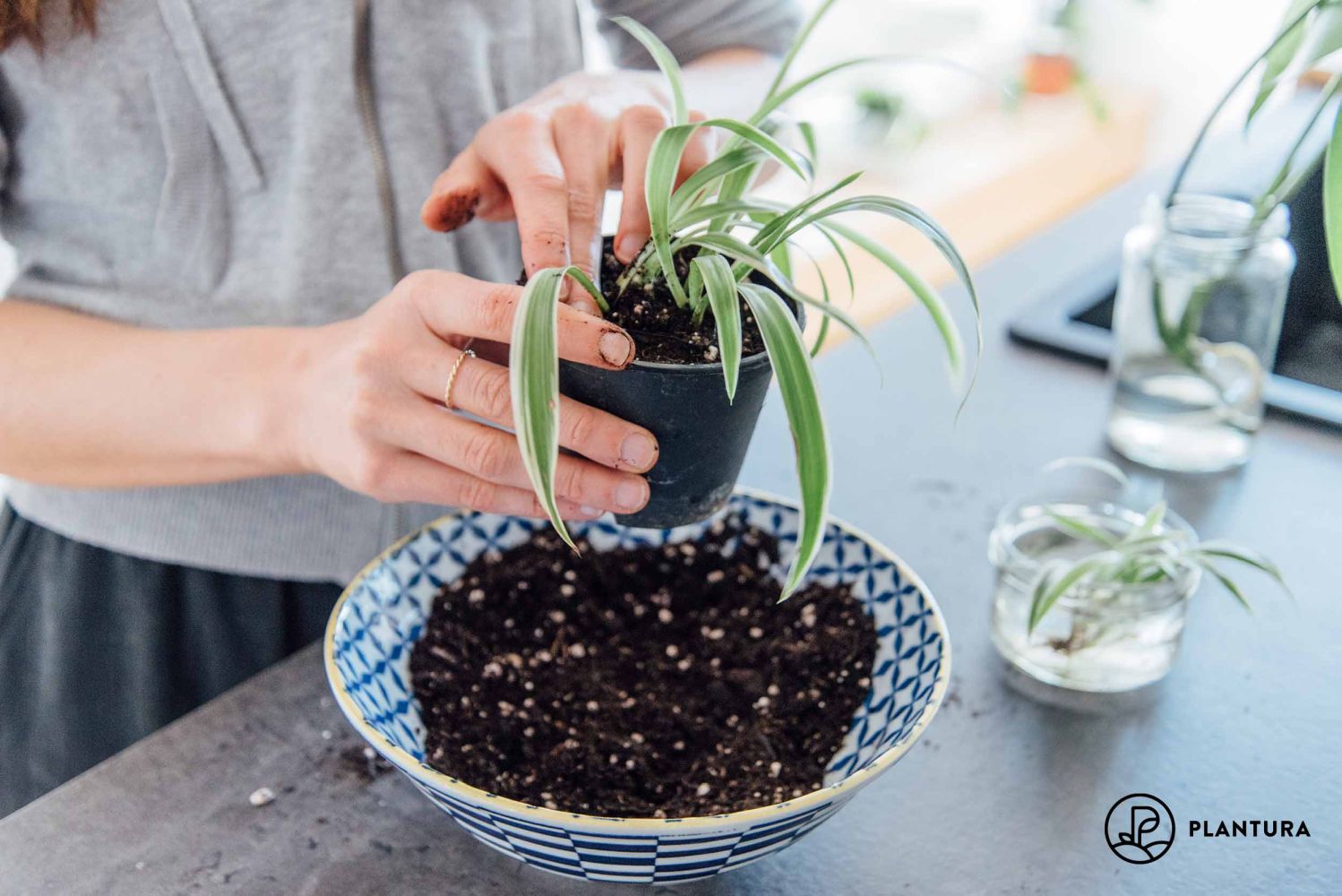The Ideal Conditions for Rapid Spider Plant Development
Spider plants are known for their ability to thrive in a variety of environments, but providing optimal growing conditions is crucial for rapid growth. The ideal conditions for spider plant development include light, temperature, water, and humidity. By understanding how each of these elements affects growth, gardeners can create an environment that fosters rapid spider plant development and answers the question of how fast do spider plants grow.
Light is a critical factor, with spider plants preferring bright, indirect light. However, they can tolerate low light conditions, although this may slow down their growth rate. Ideally, spider plants should receive 10-12 hours of indirect light per day. Temperature also plays a vital role, with spider plants thriving in temperatures between 65-75°F (18-24°C). Watering is another critical factor, as spider plants need consistent moisture, but overwatering can be detrimental. A well-draining potting mix and careful watering can help prevent waterlogged soil. Finally, humidity levels can impact spider plant growth, with ideal levels ranging from 40-60%.
By providing optimal conditions, spider plants can grow rapidly and healthily, answering the question of how fast do spider plants grow. In fact, spider plants can grow up to 2-3 feet in length and produce multiple plantlets in a year when provided with the right conditions. By understanding the importance of light, temperature, water, and humidity, gardeners can create an environment that fosters rapid spider plant development and enjoys the many benefits of these beautiful plants. By optimizing these conditions, gardeners can expect to see rapid growth and a thriving spider plant, with some varieties growing as fast as 1-2 inches per week.
It’s essential to note that spider plants can adapt to different environments, but providing optimal conditions will significantly impact their growth rate. For instance, a spider plant placed in a spot with low light may still grow, but it will do so at a slower pace. By understanding the ideal conditions for spider plant growth, gardeners can create an environment that promotes healthy and rapid development, answering the question of how fast do spider plants grow.
Understanding Spider Plant Life Cycles: From Seed to Maturity
Spider plants undergo a series of stages as they grow from seed to maturity. Understanding these stages is crucial for providing optimal care and promoting healthy growth. By recognizing the key characteristics of each stage, gardeners can tailor their care to meet the specific needs of their spider plants, ultimately answering the question of how fast do spider plants grow.
The first stage of spider plant growth is germination, which typically occurs within 1-2 weeks of sowing the seeds. During this stage, the seeds sprout, and the first set of leaves, called cotyledons, emerge. The seedlings are fragile and require careful handling, with temperatures between 65-75°F (18-24°C) and high humidity.
As the seedlings grow, they enter the vegetative stage, characterized by the development of roots, stems, and leaves. This stage can last several weeks to a few months, depending on the variety and growing conditions. During this stage, spider plants require consistent moisture, indirect light, and fertilization to promote healthy growth.
Once the spider plant reaches maturity, it enters the reproductive stage, where it produces flowers and eventually, plantlets. This stage can occur within 6-12 months of germination, depending on the variety and growing conditions. The plantlets, also known as spiderettes, are miniature versions of the mother plant and can be propagated to create new plants.
Understanding the different stages of spider plant growth is essential for providing optimal care and promoting healthy growth. By recognizing the key characteristics of each stage, gardeners can tailor their care to meet the specific needs of their spider plants, ultimately answering the question of how fast do spider plants grow. By providing the right conditions and care, spider plants can grow rapidly and healthily, with some varieties growing as fast as 1-2 inches per week.
How to Boost Spider Plant Growth with Proper Care
Proper care is essential for promoting healthy spider plant growth and answering the question of how fast do spider plants grow. By incorporating a few simple practices into their care routine, gardeners can significantly increase the growth rate of their spider plants.
Fertilization is a critical aspect of spider plant care. Feeding spider plants with a balanced, water-soluble fertilizer during the growing season (spring and summer) can provide them with the necessary nutrients for rapid growth. It’s essential to dilute the fertilizer to half the recommended strength to avoid burning the roots.
Pruning is another vital practice for promoting healthy spider plant growth. Removing dead or damaged leaves and stems can help prevent the spread of disease and encourage the plant to focus its energy on producing new growth. Pruning can also help maintain a bushy shape and promote the production of plantlets.
Pest control is also crucial for spider plant growth. Common pests like spider mites, mealybugs, and scale can weaken the plant and slow down its growth. Regularly inspecting the plant for signs of pests and taking action quickly can help prevent infestations and promote healthy growth.
In addition to these practices, providing support for the plant can also help promote healthy growth. Spider plants can become top-heavy, especially when producing plantlets, so providing a trellis or stake can help keep the plant upright and encourage it to grow more vigorously.
By incorporating these practices into their care routine, gardeners can significantly increase the growth rate of their spider plants. With proper care, spider plants can grow rapidly and healthily, with some varieties growing as fast as 1-2 inches per week. By understanding how to boost spider plant growth, gardeners can enjoy the many benefits of these beautiful plants and answer the question of how fast do spider plants grow.
The Role of Soil Quality in Spider Plant Growth
Soil quality plays a crucial role in spider plant growth, and understanding its impact can help answer the question of how fast do spider plants grow. Spider plants require a well-draining, nutrient-rich soil to thrive, and neglecting this aspect of care can lead to stunted growth and poor health.
The pH level of the soil is a critical factor in spider plant growth. Spider plants prefer a slightly acidic to neutral soil pH, ranging from 6.0 to 7.0. A pH level outside this range can lead to nutrient deficiencies, which can slow down growth. Gardeners can test their soil pH using a pH meter or send a sample to a lab for analysis.
Nutrient availability is another essential aspect of soil quality. Spider plants require a balanced diet of nitrogen, phosphorus, and potassium to grow rapidly. A soil rich in organic matter, such as compost or peat moss, can provide these essential nutrients. Gardeners can also use a balanced fertilizer to supplement the soil’s nutrient content.
Drainage is also critical for spider plant growth. Spider plants are prone to root rot if the soil is too wet, which can slow down growth and even lead to plant death. A well-draining soil with a mix of perlite, vermiculite, or sand can help prevent waterlogged soil and promote healthy growth.
To choose the right soil for optimal spider plant growth, gardeners should look for a mix specifically designed for tropical plants or houseplants. These mixes typically contain a blend of peat moss, perlite, and vermiculite, which provides the necessary drainage and nutrient availability. Gardeners can also create their own mix using a combination of these ingredients.
By understanding the importance of soil quality in spider plant growth, gardeners can take steps to provide their plants with the optimal conditions for rapid growth. With the right soil, spider plants can grow rapidly and healthily, with some varieties growing as fast as 1-2 inches per week. By recognizing the role of soil quality, gardeners can unlock the secrets of spider plant growth and enjoy the many benefits of these beautiful plants.
Spider Plant Varieties: Which Ones Grow the Fastest?
With over 200 species of spider plants, gardeners have a wide range of options to choose from when it comes to selecting a fast-growing variety. While most spider plants grow at a moderate rate, some varieties are bred specifically for their rapid growth and ability to thrive in a variety of conditions.
One of the fastest-growing spider plant varieties is the ‘Variegatum’ or ‘Vittatum’, which can grow up to 2 inches per week in ideal conditions. This variety is known for its striking white and green striped leaves and its ability to produce an abundance of plantlets.
Another popular variety is the ‘Bonnie’ spider plant, which is known for its compact growth habit and rapid production of plantlets. This variety is ideal for gardeners who want to propagate their spider plants quickly and easily.
The ‘Hawaiian’ spider plant is another fast-growing variety that is known for its bright green leaves and rapid growth rate. This variety is ideal for gardeners who want to add a tropical touch to their indoor or outdoor spaces.
When selecting a spider plant variety, gardeners should consider factors such as growth rate, leaf color, and plantlet production. By choosing a variety that is bred for rapid growth, gardeners can answer the question of how fast do spider plants grow and enjoy the many benefits of these beautiful plants.
In addition to selecting a fast-growing variety, gardeners can also take steps to promote healthy growth and increase the growth rate of their spider plants. By providing optimal growing conditions, including bright light, warm temperatures, and regular watering, gardeners can encourage their spider plants to grow rapidly and thrive.
By understanding the different spider plant varieties and their growth rates, gardeners can make informed decisions about which variety to choose and how to care for their plants. With the right variety and care, spider plants can grow rapidly and healthily, providing gardeners with a beautiful and thriving plant.
Common Mistakes to Avoid When Growing Spider Plants
While spider plants are relatively easy to care for, there are some common mistakes that can slow down their growth rate. By understanding these mistakes and taking steps to avoid them, gardeners can promote healthy growth and answer the question of how fast do spider plants grow.
One of the most common mistakes is overwatering, which can lead to root rot and slow down growth. Spider plants prefer well-draining soil and should be watered only when the top inch of soil feels dry to the touch. Underwatering, on the other hand, can also slow down growth, so it’s essential to find a balance.
Inadequate light is another common mistake that can slow down spider plant growth. Spider plants prefer bright, indirect light, and should be placed near a sunny window or under grow lights. Insufficient light can lead to weak and spindly growth, making it difficult to achieve the desired growth rate.
Failing to fertilize spider plants regularly can also slow down growth. Spider plants require a balanced fertilizer to provide them with the necessary nutrients for growth. Fertilizing once a month can help promote healthy growth and increase the growth rate.
Pest infestations, such as spider mites and mealybugs, can also slow down spider plant growth. Regularly inspecting plants for signs of pests and taking action quickly can help prevent infestations and promote healthy growth.
By avoiding these common mistakes, gardeners can promote healthy growth and increase the growth rate of their spider plants. By providing optimal growing conditions, including bright light, regular watering, and balanced fertilization, gardeners can answer the question of how fast do spider plants grow and enjoy the many benefits of these beautiful plants.
Additionally, monitoring plant growth and adjusting care accordingly can help identify any potential issues before they become major problems. By staying vigilant and taking proactive steps, gardeners can ensure their spider plants grow rapidly and healthily, providing a beautiful and thriving addition to any indoor or outdoor space.
Spider Plant Growth Expectations: What to Expect in the First Year
When it comes to growing spider plants, it’s essential to have realistic expectations about how fast they will grow. Understanding what to expect in the first year can help gardeners provide the right care and attention to promote healthy growth and answer the question of how fast do spider plants grow.
In the first year, spider plants typically go through a period of rapid growth, producing new leaves and stems at a rate of about 1-2 inches per week. During this time, it’s essential to provide optimal growing conditions, including bright light, regular watering, and balanced fertilization.
By the end of the first year, spider plants can grow up to 2-3 feet tall and produce multiple plantlets, which can be propagated to create new plants. With proper care, spider plants can continue to grow and thrive, producing a lush and vibrant display of foliage.
To monitor and adjust care accordingly, gardeners should regularly inspect their spider plants for signs of growth, such as new leaves and stems. By tracking growth and adjusting care as needed, gardeners can ensure their spider plants grow rapidly and healthily.
It’s also important to note that spider plant growth rates can vary depending on factors such as light, temperature, and humidity. By providing optimal growing conditions and avoiding common mistakes, gardeners can promote healthy growth and maximize the growth rate of their spider plants.
By understanding what to expect in the first year, gardeners can set realistic expectations and provide the right care and attention to promote healthy growth and answer the question of how fast do spider plants grow. With proper care and attention, spider plants can thrive and provide a beautiful and vibrant display of foliage for years to come.
Maximizing Spider Plant Growth with Propagation
One of the most effective ways to maximize spider plant growth is through propagation. By creating new plants from existing ones, gardeners can increase the growth rate and enjoy a lush and vibrant display of foliage. But how fast do spider plants grow when propagated?
The answer lies in the fact that propagated spider plants can grow up to 50% faster than seed-grown plants. This is because propagated plants have a head start on seed-grown plants, as they are already mature and have a established root system.
To propagate spider plants successfully, gardeners should follow a few simple steps. First, choose a healthy mother plant with plenty of plantlets. Then, cut the plantlets from the mother plant, making sure each one has at least one leaf and a small root system. Next, pot the plantlets in a well-draining soil and water thoroughly. Finally, provide optimal growing conditions, including bright light, regular watering, and balanced fertilization.
By propagating spider plants, gardeners can not only increase the growth rate but also create new plants with desirable traits. For example, gardeners can propagate plants with variegated leaves or unique growth habits, adding diversity and interest to their indoor or outdoor space.
In addition to increasing growth rate, propagation can also help to preserve the genetic material of the mother plant. By creating new plants from the same genetic material, gardeners can ensure that the desirable traits of the mother plant are passed on to the next generation.
Overall, propagation is a powerful tool for maximizing spider plant growth and increasing the growth rate. By following a few simple steps, gardeners can create new plants that are healthy, vigorous, and fast-growing, answering the question of how fast do spider plants grow.









:max_bytes(150000):strip_icc()/spider-plant-propagation-5087087-07-21751e30755446fca99fa372c9ad0a8c.jpg)